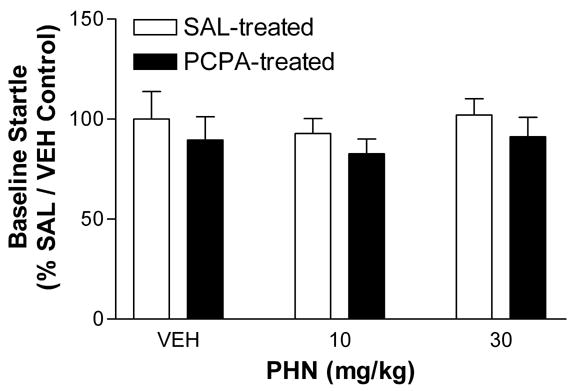Figure 3.

Phenytoin does not alter baseline startle responses in individually housed rats. Rats were individually housed for 13 days prior to testing, and received either PCPA (300 mg/kg i.p.) injections on days 1 and 10 or isovolumetric injections of 0.9 % saline. Baseline startle was measured 30 min after injection of PHN (0, 10, or 30 mg/kg i.p.) on days 13, 15, and 17 within subjects, and is expressed as percent (mean ± SE) of control (group housed, saline, 0 mg/kg PHN) startle amplitude during leaders and trailers (Methods). The baseline startle amplitude of saline treated animals was 970 ± 130, 900 ± 70, and 990 ± 80 at 0, 10, and 30 mg/kg PHN, respectively. In PCPA treated rats, baseline startle amplitude was 870 ± 110, 800 ± 70, and 890 ± 100 at 0, 10, and 30 mg/kg PHN, respectively. Two-way ANOVA shows no significant main effect of PHN (p > 0.05) or PCPA (p > 0.05) and no significant interaction (p > 0.05). However, the matching within subjects was significant (p < 0.05), indicating that phenytoin did not alter baseline startle reactivity in these animals.
